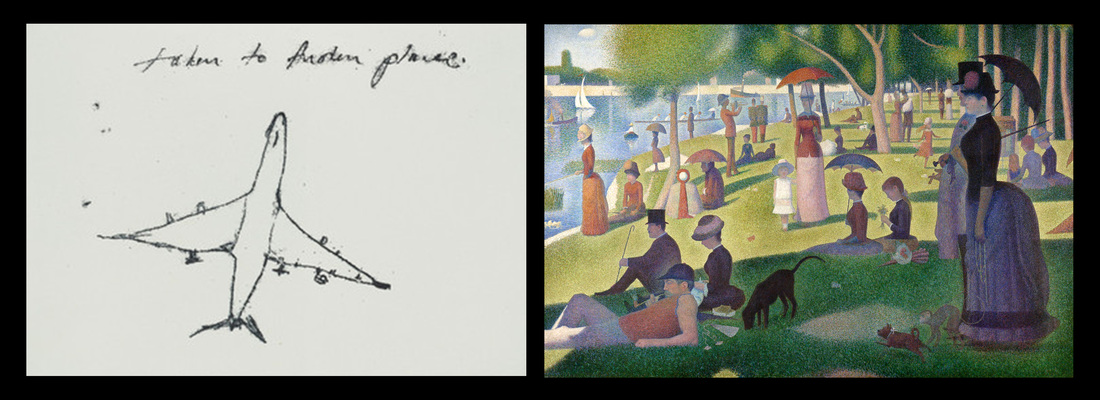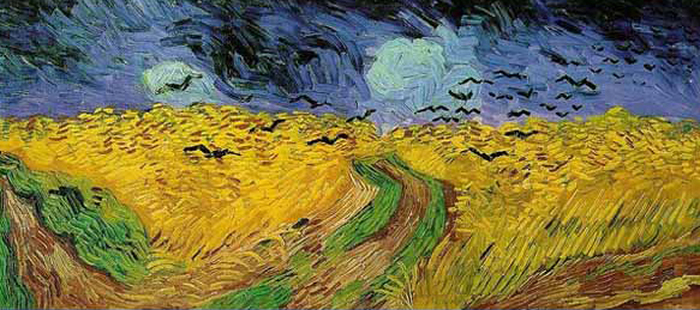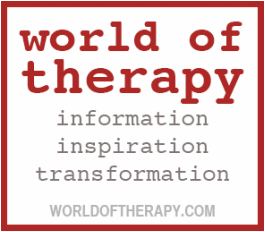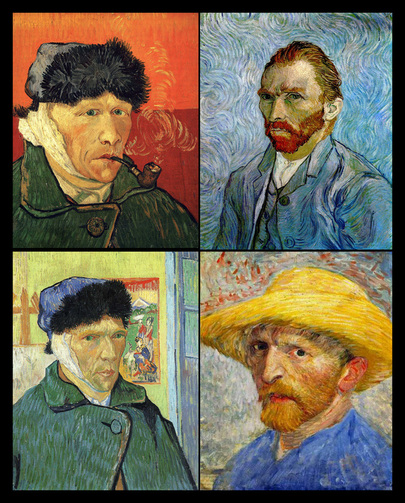 Van Gogh's art was perhaps his attempt to make sense of his madness, his tortured self, his brilliance.
Van Gogh's art was perhaps his attempt to make sense of his madness, his tortured self, his brilliance. Does a true artist have to be a tortured genius? Must there be some psychological crossed wiring, some gaping brain lesions, or a too-hot neurotransmission system to allow such acute sensitivities to the outer world and the inner world of the imagination? Or is the torture the effect of heightened creativity rather than the cause—does it all take its toll? Do creators see and feel too much? Is art a gift—or a curse, consigning the artist to drown in angst and absinthe in a lonely garret? Is art only good if its creator suffered?
On her Brain Pickings site, Maria Popova writes on the relationship between creativity and mental illness, quoting extensively from the book The Creating Brain: The Neuroscience of Genius by Nancy Andreasen, which casts a forensic eye over such evidence as Van Gogh’s letters or Sylvia Plath’s journals or Leo Tolstoy’s diary of depression or Virginia Woolf’s suicide note. In a study of the Iowa Writers Workshop, Andreasen found the majority of the writers “described significant histories of mood disorder that met diagnostic criteria for either bipolar illness or unipolar depression.” She concluded that psychological distress is indeed allied to creative genius (but to be successful it must be overcome). And that creative people are in fact different, superior beings. She writes: “Although many writers had had periods of significant depression, mania, or hypomania, they were consistently appealing, entertaining, and interesting people. They had led interesting lives, and they enjoyed telling me about them as much as I enjoyed hearing about them.”
I don't agree on either count. Creativity is not some kind of special neurosis bestowed on the chosen few. It is instead like love—a good, healthy and universal part of being human. Anyone can access that incandescent, transcendant energy that can fuel our waking moments—and lots of our sleeping moments, too. You don’t need to be a genius—nor class A drugs—to see with kaleidoscope eyes.
“No matter what your age or your life path, whether making art is your career or your hobby or your dream, it is not too late or too egotistical or too selfish or too silly to work on your creativity,” writes Julia Cameron in The Artist’s Way, which argues that accessing creativity is akin to a spiritual awakening—anyone can plug into some kind of cosmic or divine grid of “spiritual electricity.”
For Betty Edwards, author of Drawing on the Right Side of the Brain, becoming creative is simply learning how to see. “You may feel that you are seeing things just fine and that it’s the drawing that is hard. But the opposite is true ... By learning to draw you will learn to see differently and, as the artist Rodin lyrically states, to become a confidant of the natural world, to awaken your eye to the lovely language of forms.”
There are plenty of sane, ordinary, even rather boring people who are also highly creative artists, writers and poets. (Conversely there are also plenty of people who suffer who don’t create anything.) Years ago, one example of a seemingly untortured artist, the novelist Kurt Vonnegut, told a packed auditorium that every person in the room probably had the imagination to write a serviceable novel. The only difference, Vonnegut said, is motivation: very, very few actually do it. (Probably just as well—the world hardly needs more mediocre novels.) So why do those that create do what they do? Why does anyone spend months or years labouring over many thousands of words that almost certainly will never have an audience? Where does the motivation come from?
It is here that a little bit of madness can give us a push. It’s possible that being a little unhinged or conflicted, with a slightly cracked heart, can provide a call to create, to search for meaning, to try to make sense of it all. Freud regarded art as another “royal road to a knowledge of the unconscious activities of the mind,” like dreams. Creative pursuits can be enormously therapeutic for dissatisfied, distressed or damaged souls. It is an outlet, a form of expression for those without a voice. And there have also been studies linking creativity with bipolar-type people, the intense exhilaration of manic highs perhaps providing not only the raw materials to build a palace in the sky but also the energy to put it all together.
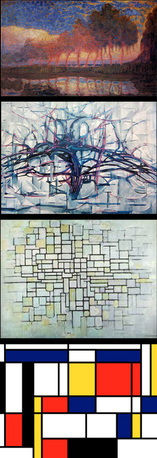 Mondrian's strange artistic journey.
Mondrian's strange artistic journey. But while it may help you put pen or paintbrush to paper, mental ill-health is not a prerequisite. Because creativity, at heart, is play. The late great British psychoanalyst D. W. Winnicott said creativity and play are essential parts of being fully human, and should be nurtured and encouraged in people of all ages, starting in childhood (something Ofsted and uncreative, unplayful education ministers all too often forget, if they ever knew it in the first place). Wrote Winnicott: “It is in playing and only in playing that the individual child or adult is able to be creative and to use the whole personality, and it is only in being creative that the individual discovers the self.”
A lot of the great artists probably didn’t set out to become great artists. They weren’t tortured souls, creating their art out of despair. They just liked messing around with words, images, melodies, ideas, and the biproduct of that process, eventually, was a valuable creation.
It doesn’t matter if your creativity produces anything that others deem to be “good.” Art—like psychotherapy, or indeed living—is about being engaged in the process rather than fixated on the outcome. If you stare at the blank canvas burdened with aspirations of greatness, with all the grand masters down the ages peering over your shoulder, not to mention your critical parents and others who sit in judgment over you, you’re coming at it from the wrong direction. You’re imposing top-down commands instead of seeing what emerges organically from the bottom-up. You will be paralysed. The canvas will remain blank. And so will you.
And you don't have to create “art." There are many ways of being creative, of playing. But if you don’t, won’t or can’t play, if access to your “child” self has been cut off, you will turn into a drone, a worker bee, an automaton—serious, lacking in passion, colourless. The “Person Who Cannot Play,’’ writes Thomas Harris in I’m OK—You’re OK, is “duty-dominated, always working late at the office, all business, impatient with family members who want to plan a skiing trip or a picnic in the woods.”
Decades later, you might well recall that picnic in the woods as you lie on your deathbed. The memory might raise a Mona Lisa smile. You won’t be wishing you spent more hours in the office.
However you do it, it's important to play. Accessing your playful, spontaneous, impulsive “child” self is fundamental in creating your life or your art. But it’s not the whole story. You do need a bit of “parent” mixed into the palette too. There is such a thing as technique. Ideally, there is an integration of the whole self. Tracey Emin, for instance, perhaps suffers from too much “child”; the lifeless pointillist paintings of Georges Seurat from too much “parent.”
If we’re only willing, we can all be a channel. If we can forget about whether or not we have the right kind of van Gogh-like madness in sufficient quantities, and forget about our grandiose fantasies of being special, gifted, and achieving greatness and fame, and forget—for a few precious moments—all our everyday demands, duties and responsibilities, then we can simply plug in and allow the good energy to flow through us, and set us free.

